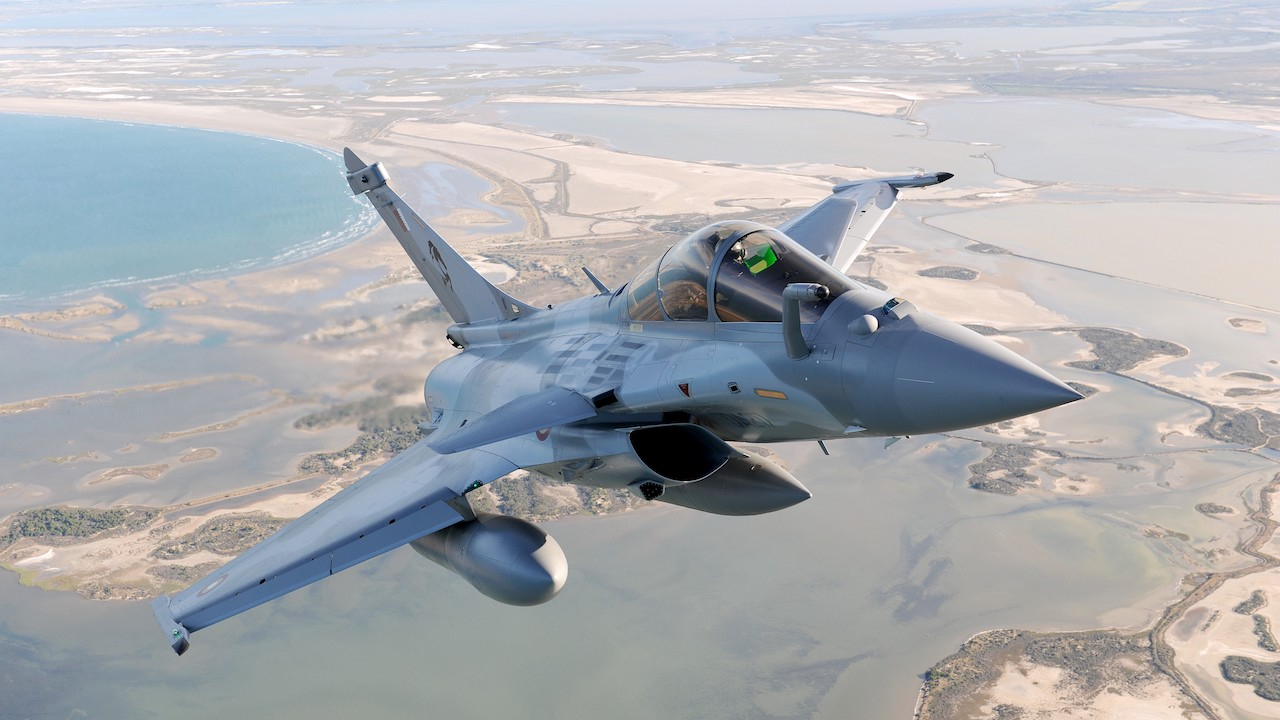Under the skin of the new Iranian stealth fighter
Further details are emerging on the new fighter jet unveiled by Iran earlier this week. The F313 “Qaher” – which means conquer in Farsi - is described as a new stealth fighter with short take off and landing capability.

Pictures by Younis Khany, MEHR news agency
"The advanced aircraft with an advanced appearance has a very small radar cross section and is capable of operating and flying in low-altitude," Iranian defence minister Brig Gen Ahmad Vahidi told the official FARS state news agency.
Iran’s President Mahmoud Ahmadinejad witnessed the unveiling and said that the Qaher 313 is “one of the most sophisticated fighter jets in the world today”, and “Iran’s defence does not serve purposes of expansionism and aggression against other countries.”
The defence minister said that the new jet featured advanced electronic systems and could be armed with missiles and other weapons developed by the Iranian industry.
"The fighter jet is Iranian made and all its parts, from A to Z, have been manufactured domestically," Hassan Parvaneh, project manager for the Qaher 313, told Iranian state television. He also said that the Qaher was the first Iranian jet to use a front control wing.
Observers at the launch said there were ten characteristics that stood out on the Qaher.
1- Using Two inlets and inlet ducts make up the air induction system to deliver air to the engine. Due to an indirect angle of the engine to the air inlets, the radar reflectivity is reduced, and it makes angled design of inlet ducts to the surface to get radar energy wave, just like in F35
2- The hot exhaust gas mixes with cold air through the inlet ducts, and gets cooler before it gets out of the exhaust system, to reduce heat effects on the surface of the aircraft.
3- Use of radar-absorbent materials in the body, to absorb wave energy and reduce radar reflection, for greater stealth effect of Qaher F-313 fighter.
4- Considering the estimated length and height of the aircraft is less than 16 and 4 meter, the two compartments with payload capacity of carrying two 2000 pound bombs, or greater number of smaller smart guided missiles, or at least 6 air-to-air missiles in the category of R-17 or PL-12.
5- Relatively large vertical tail surface has created favourable directional stability and with canted vertical tails create aerodynamic benefits as well specific appropriate lateral manoeuvring capabilities.
6- The very large canopy gives a 360 degree visibility, which is essential for low altitude fly-by flights, especially helps ground mission attacks, and it is also very useful in close dog-fights.
7- The angled wing is a perfect example of indigenous design for aircraft, which gives a side profile like M, and similar to a W profile, is the best form to use in modern aircraft.
8- Single-cycle landing gear is proof that F-313 is a light weight aircraft, with minimum flying weight of 12 to 14 ton, and maximum flying weight of 20 ton.
9- There are 8 analogue displays in the cockpit, which shows Multi-Function Display (MFD) technology has more room to improve in the Qaher jet.
10- The F-313 has a central control stick, with the control systems, the wing movable surfaces, rudder, and vertical stabilizer all hydraulically controlled and not fly-by-wire (FBW) system.
Vahidi said that advanced computer design software (CATIA) was used for designing the F-313, and aerodynamic analysis methods such as computational fluid dynamics (CFD) also were used, with the help of numerical grid generation software (GAMBIT), flow analysis software (FLUENT) and other design computation software, “his shows complete scientific work in various areas of indigenous scientific and technology was used for F-313,” he said
Observers at Flightglobal said that given the apparent small size of the aircraft and its single engine design, the Qaher 313 could be powered by reverse engineered variants of the General Electric J-85 turbojet that Iran is known to have in its possession.
Stay up to date
Subscribe to the free Times Aerospace newsletter and receive the latest content every week. We'll never share your email address.

